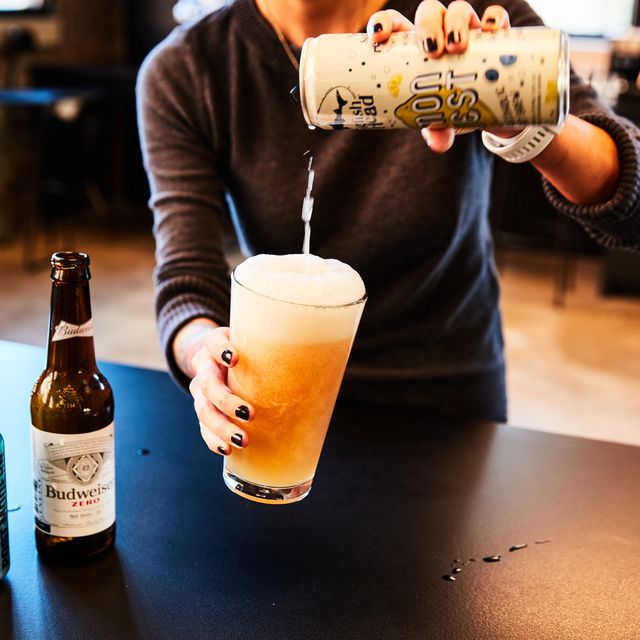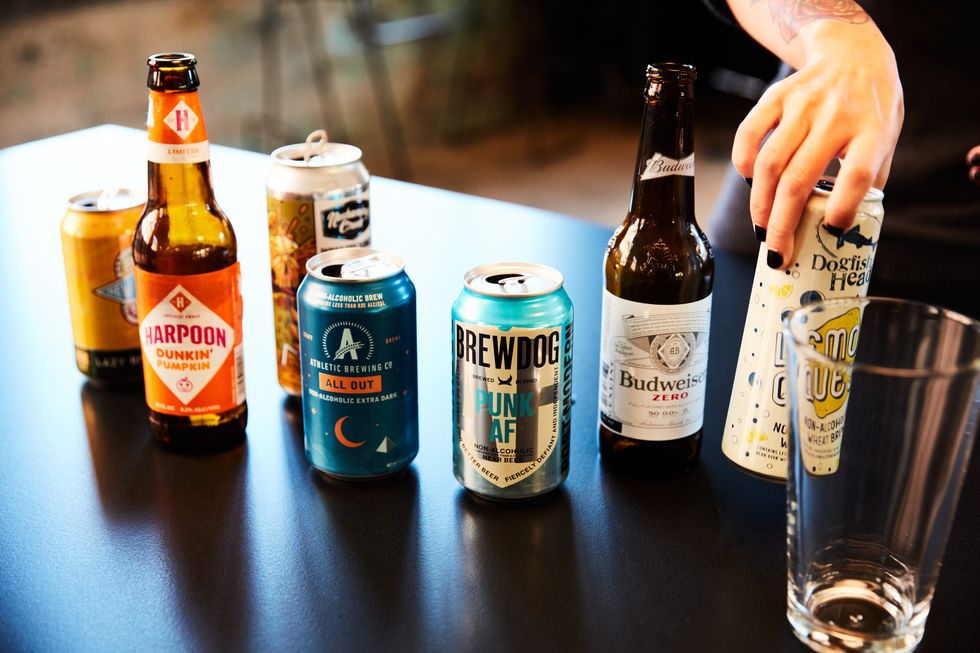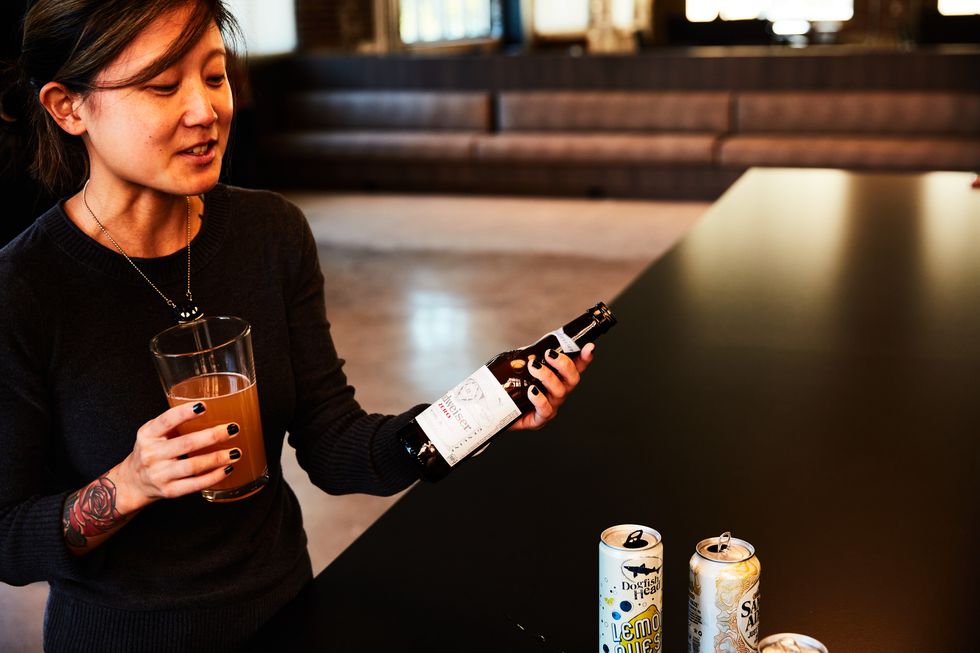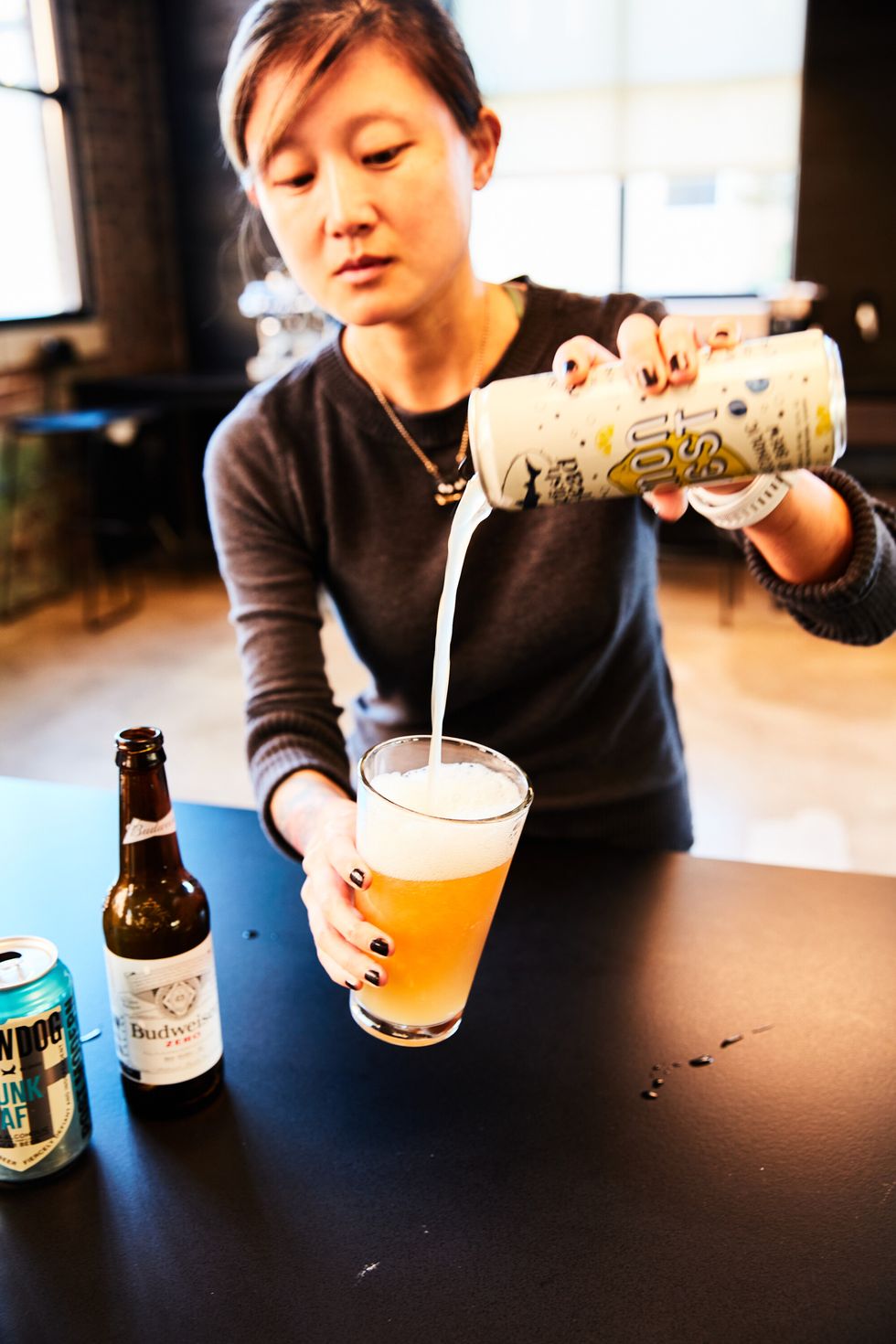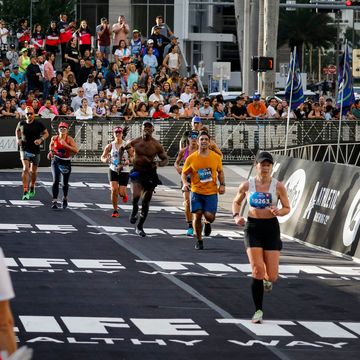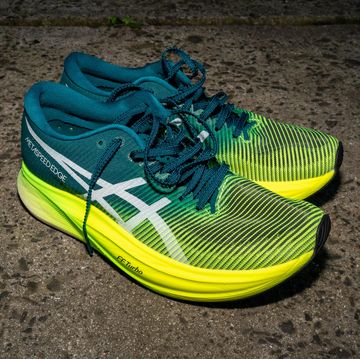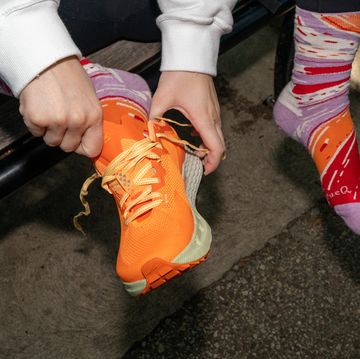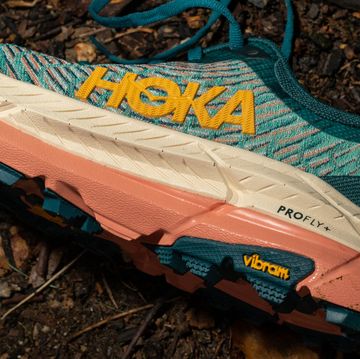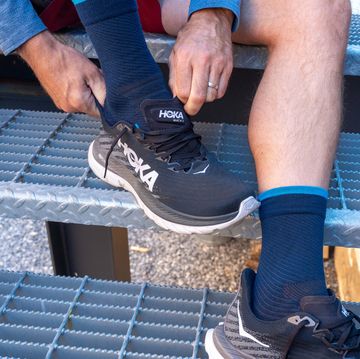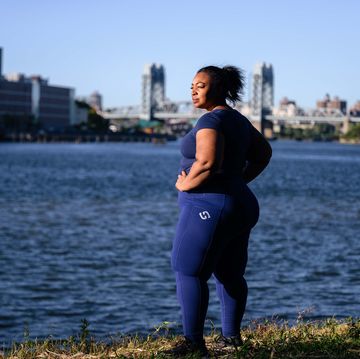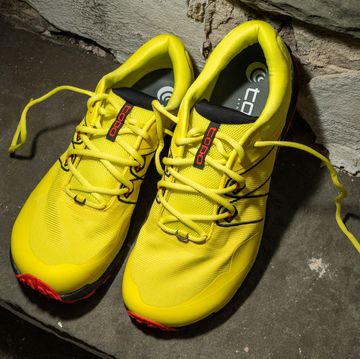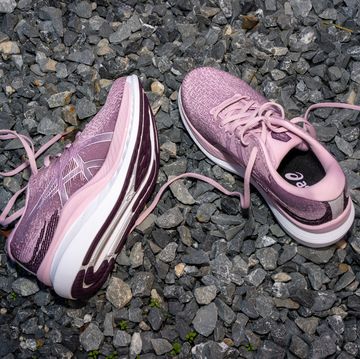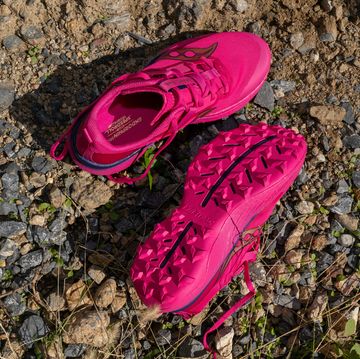This story begins with an innocent question: Does beer actually have any recovery benefits? The postrace beer is ritual for some runners; that malty Holy Grail is as much a part of the experience as a prerace pasta dinner. Imagining the celebratory beer is mental motivation when the going gets tough, and that euphoric feeling we experience upon first sip must confirm some physical and mental benefits, right?
Fingers were pointing at me to test this hypothesis. And it made sense. My credentials: Coming in second place at an unofficial beer mile (we drank from cups, not cans or bottles); hovering around office beer tasting shoots; and curating dozens of beers for said-tastings. I should have been enthusiastic, thrilled, ecstatic to drink a daily beer after every run. Instead, dear runners, I was hesitant to take on this assignment.
Pandemic Times
Here’s some real talk. Earlier this year, I realized my alcohol intake was at an all-time high. Like everyone else the globe over, I’d been shuttered during the pandemic and over the holidays. With the exception of my daily runs around town and grocery store trips with clinking bottles in my trunk, I was a tipsy hermit all through winter and spring. Midsummer, I started seeing a therapist for the first time. I made an effort to have drinks like one of my Hotlanta cousins smokes cigarettes: socially. I stopped stocking alcohol at home and only imbibed when I was out with friends.
These past two years brought to light a lot of demons buried under work stress and pre-COVID milieu. It had dawned on me that distractions weren’t as easy to manufacture when you’re hunkered down in your apartment.
The humbling thing about realizing you have a drinking problem during the pandemic is noticing how others were on their own journey to recovery. Oiselle founder Sally Bergesen, for example, had tweeted about her one year sober-versary back in May. Friends on IG posted snapshots of calendars marked with days they abstained from a 5 o’clock glass. When running groups became a thing again, a runner would casually blurt out “I don’t drink” with the shyness of a vegan declaring “I don’t eat meat” circa 2012.
People are more open about discussing their sobriety, but temperance, of course, isn’t a new phenomenon. Despite our love for beer, there is an increasing number of runners who’ve gone the abstinence route. Because we’re mostly training by ourselves and racing against our own clock, some of us runners are habitually all-or-nothing individuals. I asked Cory Golden, one of our shoe testers who joins us on Saturday group runs, about his sobriety in an email.
“As a bit of an extremist, I have a tendency to overindulge so for me it was easier to put it down rather than moderate,” Golden wrote.
Golden said his choice stemmed from the need to put his mental health first. He had gone to therapy for anxiety and depression, and noticed he felt much better after nights without drinking.
“[Abstaining from alcohol] was something that I thought would improve my quality of life and was something I decided to give a shot—no pun intended,” he said. “I can honestly say, two years into this, it has been challenging but very rewarding. I don’t feel like I need a drink to loosen up and my real friends have embraced my sobriety.”
I appreciated Golden for his candor, especially when I was cagey about my own issues taking on this project. Assessing my own personality though, I figured I could handle it. And fellow test editor, Morgan Petruny, suggested throwing another element into my beer project: non-alcoholic beer.
The Non-Alcoholic Aisle
I had been getting several PR emails about non-alcoholic beer, and was no stranger to brands like Athletic Brewing, which offers an impressive catalogue of brews with less than 0.5-percent alcohol content.
I shopped at the grocery store, raiding the local selections and no-alcohol shelves. I left with two six-packs. My kitchen table looked like a kindergarten arts and crafts table with the scraps of paper and tape I used to cover beer labels. The plan was to blindly test each can and bottle after marking the homemade Scotch-taped sleeves with its designated day of the week. I would “unwrap” once I completed the experiment to see if non-alcoholic vs. alcoholic beers had different effects on my stress level and sleep (i.e., recovery markers).
Though I was confident I wouldn’t fall back on old habits, I was still worried about being on a slippery slope. I asked therapist Amanda Shaffer Dobrowolski, LPC, if non-alcoholic options were safer alternatives.
“A non-alcoholic beer substitute would depend on if sobriety is a goal; if it is, using such an alternative may have triggering effects that threaten recovery,” Dobrowolski says. “If possible, connecting with others may be the best alternative in staying grounded.”
Golden himself opts for Sprite instead of a non-alcoholic beer postrun.
Daily Drinking
My plan to blind taste was quickly foiled. The brown paper I taped around the cans easily slipped off, and the bottles weren’t much of a mystery with their logo’d caps and necks. Still, I was on a mission. I set these ground rules:
- Drink the beer within an hour after my run.
- Don’t change anything else about my routine.
- It’s okay to have the postrun beer, plus drinks with friends.
I kept the guidelines pretty loose to ensure that I wouldn’t be making any drastic changes to my usual routine. (I’d continue to imbibe during social gatherings.) The only difference was that I would add in a postrun “recovery” beer. Here’s how some of those days went.
Day 1
Run 3:45 p.m. | 4.23 miles @ 7:33/mile
Beer: Harpoon Dunkin’ Pumpkin
ABV: 5.2%
Stress Level: 19/100
Sleep: 5 hours
I began with Harpoon Brewery’s Dunkin’ Pumpkin because it was mid-October and ’tis the season. I was excited to have a slightly spicy beer, which had a hoppy kick and went down smooth. I was little a lightheaded when the bottle was half full (it’s been a while, okay?). Sleep that night was mostly uninterrupted, yet short. According to my Garmin watch, my stress level was quite low. And as for my mood, I was looking forward to the weeks ahead.
Day 2
Run 1:00 p.m. | 6.07 miles @ 7:26/mile
Beer: Samuel Adams Just The Haze
ABV: Less than 0.5%
Stress Level: 21/100
Sleep: 7 hours
I ran on the trail near our Easton office and was positively pumped a can of Sam Adams was waiting for me back at my desk. A non-alcoholic IPA, Just The Haze tasted hoppy and a little peppery. I didn’t feel at all hazy after having a cold one midday. I also slept a full seven hours. Go me.
Day 3
Run 5:30 p.m. | 6.2 miles @ 7:40/mile
Beers: Lost Tavern Double the Jams Banana Fosters Sour; Lost Tavern Until We Brunch Again Sour
ABV: 6.9%; 7.2%
Stress Level: 44/100
Sleep: 5 hours
I waited to run since I knew I’d be heading out later for drinks with a friend. We went to a local tavern where I had two sours. It was difficult for me to nod off that night. My mind was a whirlwind of all the stresses I had vented over very sugary beer and my fingers dragged over my smartphone screen, possessed with doom-scrolling and swiping. Despite my lack of sleep, I felt oddly invigorated the next day.
Day 6
Run 12:00 p.m. | 4.65 miles @ 7:26/mile
Beer: Athletic Brewing All Out
ABV: Less than 0.5%
Stress Level: 29/100
Sleep: 10 hours
At this point, the novelty was wearing off as weariness set in. Running early meant having a beer before noon, which is all well and fun after a race, but not so much on a work day—even if it’s non-alcoholic. I took a break from the experiment during the weekend, which is just as well since I realized I mucked up the selections in my non-alcoholic six-pack. Alas, there were only five alcohol-free beers instead of six.
On days when I drank an alcoholic beer postrun, I felt a little buzzed for the next hour or so, my writing missing more articles and prepositions than usual. My stomach was beginning to suffer as well, groaning over all the carbonation and gluten I was subjecting it to on a daily basis.
Nonetheless, the All Out was a refreshing treat after a quick run and a weekend of drinking with friends. It was the first thickish non-alcohol stout I tried. I’d pair this one with a rare steak, or top it off with a scoop of vanilla ice cream. That night, I slept like a baby.
Day 8
Run 12:00 p.m. | 6.51 miles @ 7:29/mile
Beer: Budweiser Zero
ABV: 0%
Stress Level: 36/100
Sleep: 5 hours
“I’m sick of beer,” I blurted as I took a demure sip of my cabernet, explaining my predicament to my date. Earlier that day, I had half a bottle of Budweiser Zero. After I dumped the rest down the drain, I typed out these notes: “It’s lke (sic) beer but the beer taste is too strong. What are you compensating for? Stop. PLease stopppp arghhhh.” The day before I had BrewDog’s non-alcoholic Punk AF (less than 0.5 percent alcohol content). I was able to finish that beer, which also had slightly peppery notes like Just The Haze.
At dinner, I was declaring if I so much as saw another beer, it’d be too soon. Fast forward to later that night where I was sitting inside a local brewery. “I guess I’m not at that point yet where I’ll totally swear off beer,” I said sheepishly over a few swigs of pale ale. My date looked at me dubiously.
Day 9 - FINAL DAY
Run 12:30 p.m. | 4.04 miles @ 7:29/mile
Beer: Dogfish Head Lemon Quest
ABV: Less than 0.5%
Stress Level: 31/100
Sleep: 3 hours
Listen: I tried. Really, I did. But I guess I’m the kind of person who likes the buzz of beer and not the taste. I was also becoming concerned about jeopardizing the progress I’d made earlier this year in decreasing my alcohol intake. So, I ended the test with Dogfish’s Lemon Quest, and it was refreshing—a nice wheat brew that tasted like a citrusy beach day. But again, I couldn’t finish it. And I barely had any sleep that night. It was time to cut myself off. It didn’t matter whether the beers contained alcohol or not. I’d had it with this experiment.
“Had it!” I wagged my finger at the remaining four alcoholic beers in my fridge. Was that condensation—or sweat?
The Final Word: A Nutritionist’s Take
So, does beer aid recovery? As you can see by my erratic sleep and consistent running pace and stress level, it didn’t really have much of an effect on me, alcohol or no alcohol. And my lack of sleep some nights? Actually pretty standard, for me.
For an expert’s POV, I consulted nutritionist Amy Goodson, MS, RD, CSSD, LD, about beer’s recovery benefits for runners, if any.
“There really aren’t any benefits to reap,” Goodson said. “You would do better drinking a postworkout recovery drink with quick-digesting carbohydrate, high-quality protein, and electrolytes if your goal is to recover properly.”
Worse, Goodson mentioned that several studies show drinking alcohol postworkout may impair muscle protein synthesis, which can potentially delay recovery time. Beer also isn’t a good stand-in for hydration because of its diuretic properties.
But is non-alcoholic beer a better alternative?
“Non-alcoholic beers do prevent the kidneys and liver from having to do extra work; however, non-alcoholic beers are typically not designed to rehydrate individuals after a workout like other formulated sports drinks and recovery beverages,” Goodson said. “So, might they count as fluid intake? Sure. But are they best for postworkout recovery? Probably not.”
In other words, my nine days of postrun beer weren’t beneficial at all and I wasn’t going crazy thinking I had to pee more. Rich.
Week by week, I tallied alcohol units during the pandemic. According to the National Institute of Alcohol Abuse and Alcoholism, the maximum recommended allowance per week for low-risk drinking is 7 drinks for women and 14 drinks for men. Some weeks I had consumed upwards of 20 (I’m a heavy pourer). At the very least, I kept my alcohol units within the recommended limit for the duration of this experiment.
Beer didn’t aid my postrun recovery—or, for that matter, hinder it—but I think the major win is that I didn’t fall back on my heavy drinking. And did I quit while I was ahead? Yes. Like DNF-ing a race rather than risking an injury, I think I ultimately made the right choice. And when I’m among friends, I’ll likely still enjoy a pint.
If you, or someone you care about, are currently struggling with alcohol use, questioning a relationship with alcohol, or simply want to learn more, visit SAMHSA, a free, confidential, 24/7 treatment referral and information service for individuals and families facing mental and/or substance use disorders, or call 1-800-662-HELP (4357).
Amanda is a test editor at Runner’s World who has run the Boston Marathon every year since 2013; she's a former professional baker with a master’s in gastronomy and she carb-loads on snickerdoodles.
